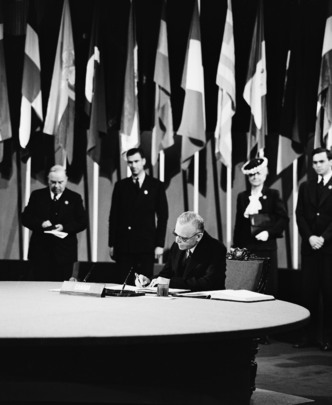Ideablawg’s Weekly Connections: International Women’s Day and Legal Inspiration From Abella, Arbour and Smith
Today is International Women’s Day, a day to celebrate how far women we have come in terms of gender equality but also a day of hope as we reflect on what still needs to be done. We are not quite there yet and certainly in many countries across the globe not there at all. There are so many inspiring women of all ages but I devote this week’s connections to three jurists women who give me legal inspiration.
- There are of course numerous Canadian women in the law profession who provide inspiration to us all. Check out the page at U of T Law School dedicated to some of these legally minded trailblazers. Out of the list, I find inspiration from Madame Justice Rosalie Abella, now sitting on the Supreme Court of Canada. Not only she is an exceptional jurist and dedicated human rights advocate (see the blog I wrote on her dissent in the Court of Appeal on Crown misconduct) but her life story is also an inspiration. A child of the Holocaust, she was born in a Displaced Persons’ Camp in Stuttgart, Germany where her father, a lawyer, helped advocate for the other displaced persons’ in the camp. I have had the opportunity to appear in front of Justice Abella when she was first appointed to the Ontario Court of Appeal and argued a sentence appeal before her in the first week she was sitting on an Appeal panel. Although it was a straightforward appeal, Justice Abella showed her mettle and her mind by dissenting in the case. This was not a controversial case at all and indeed the dissent, legally, did not matter but what did matter was the humanity and compassion she showed by doing it.
- Another Justice of the Supreme Court of Canada, albeit a former Justice, is Louise Arbour. Most people recognize her as the Justice who stepped down from the SCC to become the Chief Prosecutor for the International Criminal Tribunals investigating the war crimes of the former Yugoslavia and Rwanda. She then became High Commissioner for Human Rights in 2004 and retired from that position in 2008. Although her tenure in the international scene was not without controversy, she is an inspiration for her tenacity and her deeply held beliefs in international human rights. She now heads the International Crisis Group where she speaks out against any oppressive regime and even western powers like Canada, who, in her view, are not doing enough to advance human rights internationally. Again, I had the pleasure of appearing before Justice Arbour many times when she sat in the Ontario Court of Appeal. Her expansive knowledge of criminal law made it a pleasure to argue a criminal appeal before her. However, I believe it was when she took on the unenviable task of inquiring into the Prison for Women at the Kingston Penitentiary in 1995 that I truly found her most inspiring. Her report is a shocking read but an important one for prisoner rights and women rights. She truly made a difference. After her report, P for W was disbanded.
- For more inspiration, I look no further than the trial court. Day in and day out trial judges sift through the nuts and bolts of legalese and listen to the narratives placed before them. Sure they determine cases by applying legal principles but the very best trial judges do so by hearing the stories of the people affected. This is an important part of access to justice – to listen and to give those before them a fair and just hearing. When I was a law student at Osgoode Hall Law School, I was lucky enough to win the lottery for the incomparable Criminal Law Intensive Program run by the then criminal law professor Alan Grant. It was an amazing program where we students were seconded with lawyers and judges to shadow their daily work lives and to take in their unique perspective on the criminal justice system. I was seconded with the then District Court Judges and among the group I had the honour to work with was the then the Honourable Judge Heather Smith. Of course now she is Chief Justice of the Ontario Superior Court of Justice and the first woman to hold that position. There are no words to express how impressed I was with her abilities and her commitment to the criminal justice system. As a woman and as a soon to be articling student, she inspired me to treat the law and those individuals in the law, be it lawyers or clients, with respect. In my mind she was the epitome of a trial judge – competent, thoughtful, compassionate and learned in the law - and an inspiration for a young female barrister ready to take on the world.
 Lisa A. Silver
Lisa A. Silver
